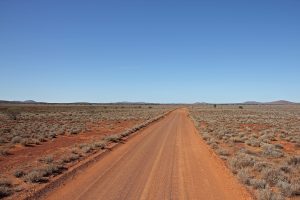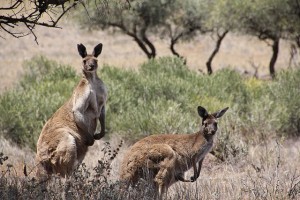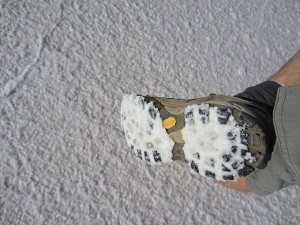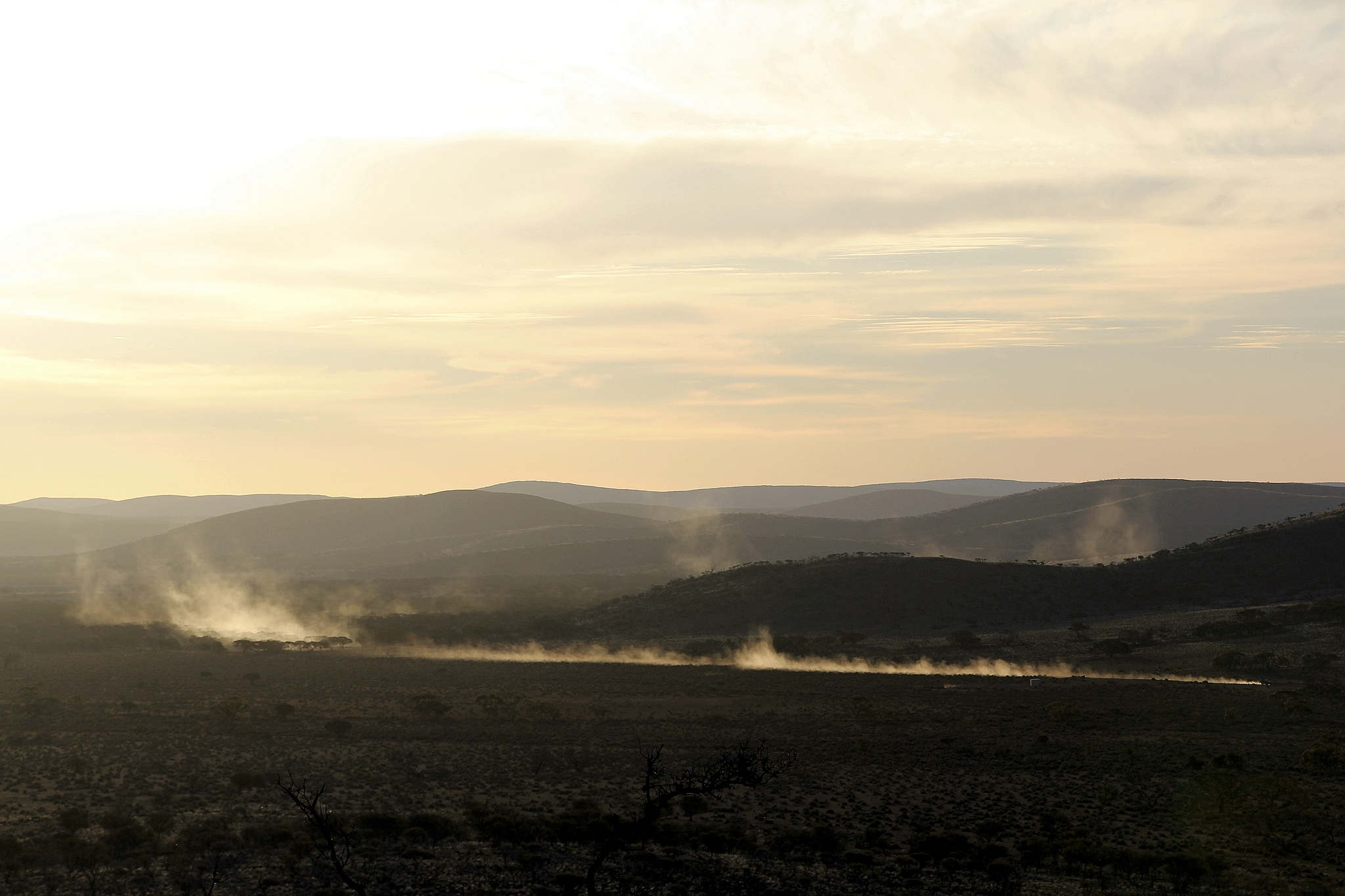 Gawler Ranges National Park is situated in the north of the Eyre Peninsula (see previous blog post). It is a landscape characterised by rocky formations, red tracks and bush. We drove from south to north (and missed the entrance in Wudinna, so we drove further to Minnipa).
Gawler Ranges National Park is situated in the north of the Eyre Peninsula (see previous blog post). It is a landscape characterised by rocky formations, red tracks and bush. We drove from south to north (and missed the entrance in Wudinna, so we drove further to Minnipa).
In this park, you are looking at history: the rocks are volcanic material of over 1,500 million years old … The organ pipes are said to be the largest formation in its kind in the world. It truly is a stunning scenery. An odd experience is to see completely dry waterfalls. The rocks are eroded, and there are colour differences proving there must flow water someday, but that is hard to imagine if you stand in front when it is 35 degrees or so …
We loved driving through this park. However you must be very careful and watch for wildlife every second.  The kangaroos are nervous when you come closer, but it is fun to watch how they jump alongside your car. This landscape might look inhabitant by humans, but don’t be fooled … Some Australians seem to be appealed by endless landscapes where the closest neighbour is some hundred kilometres away. And this means as a visitor you must be aware of crossing sheep. Even back in the 19th Century, people lived here, which is hard to imagine. The Pondann Ruins are a quiet reminder of those first pastoralists (the pastoral history in this region goes back to 1850!). We stayed at a huge farm, called Mount Ive Station. The farm wasn’t running at that time, but is still a unique experience to learn to know how the people actually live here. We enjoyed a magnificent sunset and moonrise here (and made our way back to the farm in time so we didn’t have to drive in the dark). We found some snake traces in the sand, which we didn’t exactly liked. The kangaroos on the other hand are smart enough to find some water here J
The kangaroos are nervous when you come closer, but it is fun to watch how they jump alongside your car. This landscape might look inhabitant by humans, but don’t be fooled … Some Australians seem to be appealed by endless landscapes where the closest neighbour is some hundred kilometres away. And this means as a visitor you must be aware of crossing sheep. Even back in the 19th Century, people lived here, which is hard to imagine. The Pondann Ruins are a quiet reminder of those first pastoralists (the pastoral history in this region goes back to 1850!). We stayed at a huge farm, called Mount Ive Station. The farm wasn’t running at that time, but is still a unique experience to learn to know how the people actually live here. We enjoyed a magnificent sunset and moonrise here (and made our way back to the farm in time so we didn’t have to drive in the dark). We found some snake traces in the sand, which we didn’t exactly liked. The kangaroos on the other hand are smart enough to find some water here J
 At Mt Ive Station we also got the key to the entrance of Lake Gairdner. On our way towards the huge sand lake, we found a very strange object in the desert: a submarine … Funny people those outback farmers 😉 Anyway, the lake. This is the fourth biggest salt lake in Australia, and is home to an annual motor race in March when the lake is dry. This lake is also known for the land-speed record attempts. When we were there, in November 2012, the lake was still a bit soft and wet and the sand actually sticked at our shoes. It is an astonishing experience to stand on the lake and to see nothing else than a white landscape, and to enjoy absolute silence. In the next blog post we stay in this area (well, relatively …) and take you on an adventure along the Oodnadatta Track.
At Mt Ive Station we also got the key to the entrance of Lake Gairdner. On our way towards the huge sand lake, we found a very strange object in the desert: a submarine … Funny people those outback farmers 😉 Anyway, the lake. This is the fourth biggest salt lake in Australia, and is home to an annual motor race in March when the lake is dry. This lake is also known for the land-speed record attempts. When we were there, in November 2012, the lake was still a bit soft and wet and the sand actually sticked at our shoes. It is an astonishing experience to stand on the lake and to see nothing else than a white landscape, and to enjoy absolute silence. In the next blog post we stay in this area (well, relatively …) and take you on an adventure along the Oodnadatta Track.
